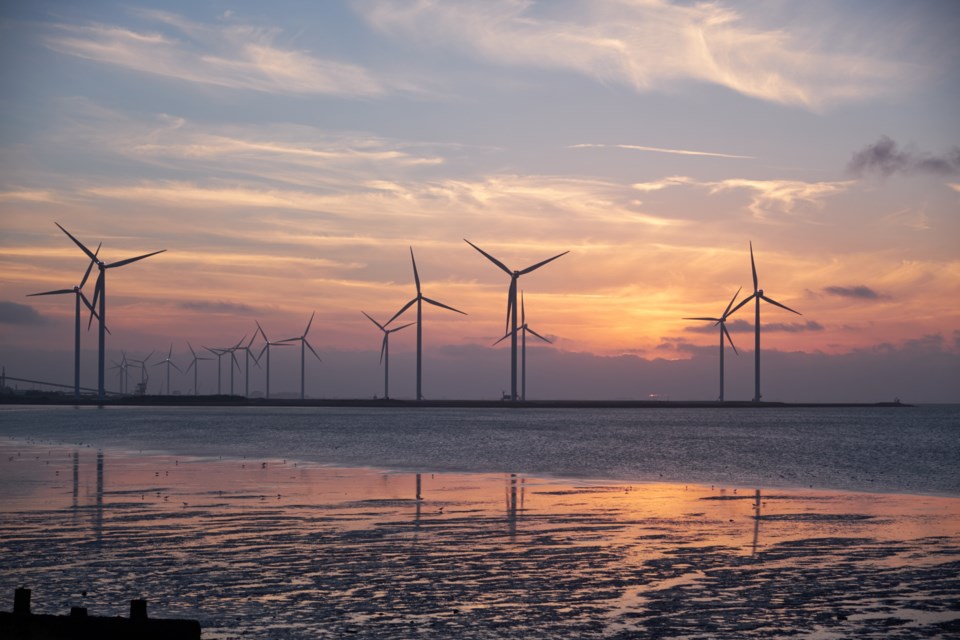By Sienna Daviau
The Inflation Reduction (IRA) act was signed into law after passing along party lines in August 2022. It was a win for Democrats, who celebrated the bill for its policies that are expected to decrease inflation by reducing the federal deficit. One way this would be done is through increasing investment in clean, domestic energy — the bill allocates $400 billion to clean energy with the goal of significantly cutting carbon emissions by 2030.
Researchers at Dartmouth and Princeton released a report in June 2023 analyzing the impact that the IRA would have on the solar and wind industry. Due to provisions like the Solar Investment Tax Credit (ITC), which gives residential homeowners tax credits for installing solar in their homes, demand for both solar and wind is expected to jump. The IRA would create an estimated 4 million solar and wind jobs by 2035.
Increased demand for clean energy is good news for the climate community, but the need for increased supply to keep up with this demand cannot be overlooked. In order for solar, wind and other clean energy to reach households, transmission lines are needed to transmit energy from the source power to consumers.
This allows those of us who live in urban areas the ability to access energy that is produced far away in rural areas, for a much lower cost. In 2022, New York State approved a project to build two new electricity transmission lines from Quebec to feed green energy to New York City. These should be operating in 2025 and 2027. The transmission lines will deliver 1,250 megawatts of clean hydropower to New York City and thus reduce carbon emissions by 3.9 million metric tons annually, which is the equivalent of taking 44% of cars in NYC off the road. These transmission lines can make a huge impact on our emission reduction goals, and while efforts are underway, we need more transmission lines and faster.
Transmission lines act like an interstate highway connecting the supply and demand for clean energy across the country. Right now, the US does not have this green infrastructure in place, and the process of building transmission lines for clean energy is more difficult and drawn out than fossil fuel energy projects. If we don’t start building clean energy infrastructure faster, it is estimated we will only achieve about 20% of the potential carbon pollution reduction from the IRA.
Critics of the current permitting process for transmission lines say that the way it is structured allows projects and approvals to drag on with no firm deadline and that the decentralized agency makeup lacks top-down direction and accountability. Stakeholders feel they have little input in the process. Right now, it takes around 4.5 years for federal agencies to complete environmental impact statements for major energy projects. In order to reach the emission goals set in the IRA, we need to triple our current capacity. To do this, we need to reform the permit process in order to expedite the creation of transmission lines.
Some progress has been made. There were several measures passed to streamline the National Environmental Policy Act (NEPA) – the main environmental law that governs the permitting process on federal lands — in the Fiscal Responsibility Act, passed early this summer. This included agency changes to centralize the decision-making process, set timelines and page limits, and increased transparency for applicants through a web portal showing status of applications.
However, there is more to be done if we want to reach our carbon goals. One ask from climate activists is for the Federal Energy Regulatory Commission (FERC) to oversee cost allocation for interstate transmission, similar to how it does for interstate gas pipelines. This would alleviate months of fighting over who pays for what among agencies. Other potential changes include a dispute resolution policy, a process to expedite approvals for clean energy in low-impact areas, a rewrite of policy to consider co-benefits of projects to make them more likely to be approved, and legislation that requires community involvement in process. It is important that the stakeholders who will be directly affected by these projects have a say.
As of August 2023, negotiations over additional permitting reform in Congress are ongoing. Permitting reform is more bipartisan than other issues because there are ways both parties can use it to their advantage, although it is widely agreed that how the policy is written now, there are far more barriers for clean energy vs. fossil fuels. While on the face of it, permitting reform may not sound like the most captivating initiative for climate activists to take on, it is absolutely crucial that we bring efficiency and accountability to the permitting process if we are going to reach the climate goals that we, as a nation, are obligated to meet.
Sienna Daviau is based in Chelsea, Manhattan where she works for the Brooklyn and Manhattan Chapters of Climate Citizens Lobby (CCL).




